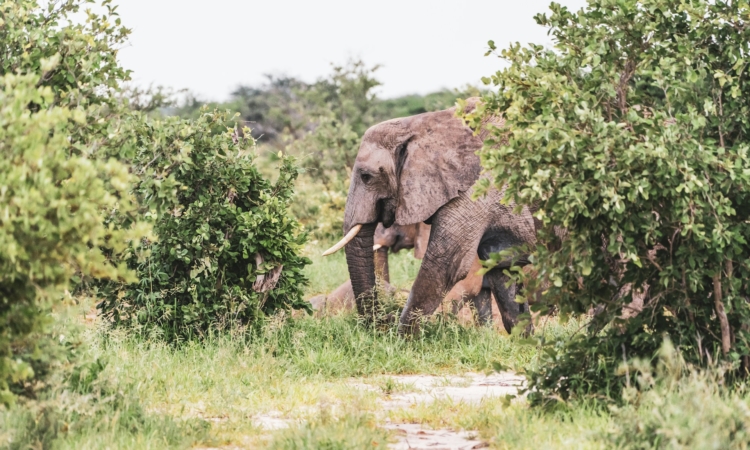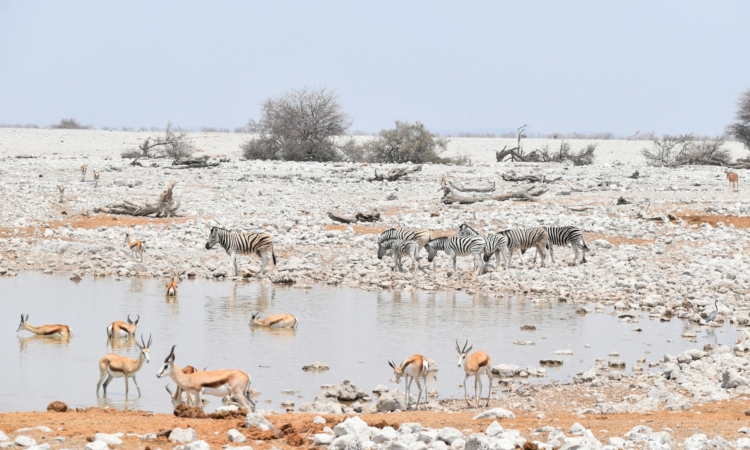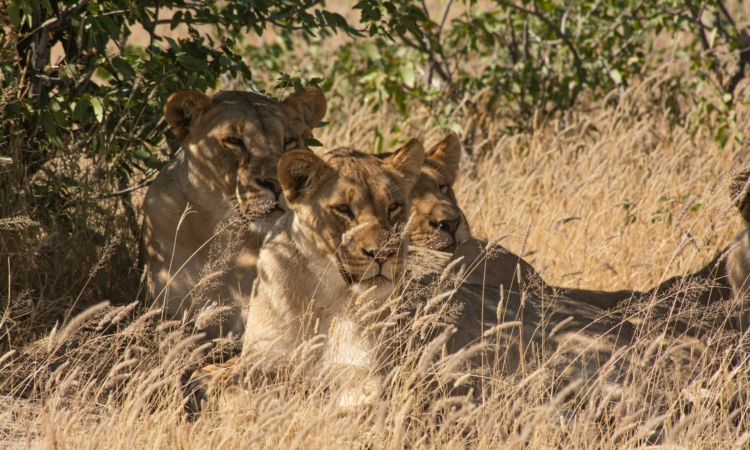Etosha National Park is one of Namibia’s most visited wildlife areas, covering over 22,000 square kilometres. Because of its large size and different habitats, the park is usually divided into four main sectors: eastern, central, southern, and western. Each sector has its own type of landscape, wildlife activity, and attractions for visitors to explore.
The eastern sector is entered through the Von Lindequist Gate. This part of the park is home to Namutoni Camp, Fischer’s Pan, and well-known waterholes such as Chudop, Kalkheuwel, and Klein Namutoni. The area is often greener than other parts of the park, especially after the rainy season. It is a good place for birdwatching and for spotting animals like elephants, giraffes, and antelopes that come to drink at the waterholes.
The central sector is known for Halali Camp, which lies between Namutoni and Okaukuejo. The landscape here is a mix of open plains and mopane woodland. Many predators, such as lions, leopards, and hyenas, are found in this area. Popular waterholes include Goas, Rietfontein, and Nuamses. Because of its position, this sector acts as a wildlife corridor, connecting the eastern and southern parts of the park, and offers visitors a variety of animal sightings.
The southern sector, also called the Okaukuejo area, is entered through Andersson’s Gate. It is the most developed and busiest part of the park. Okaukuejo Camp is well known for its floodlit waterhole, where visitors can watch elephants, black rhinos, lions, and other animals at night. The open plains in this sector make it easier to spot large herds of zebra, springbok, and oryx.
The western sector can be reached through Galton Gate. This area was closed to the public for many years but is now open for visitors. It has Dolomite Camp as its main accommodation and receives fewer tourists.
The landscape includes hills, rocky areas, and open plains. It is home to animals that are not often seen in other parts of Etosha, such as Hartmann’s Mountain zebra, black-faced impala, and black rhinos.
The limited roads and facilities help to keep this area quiet and natural, offering a more remote safari experience.







